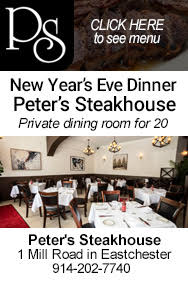From the Mayor: Bronxville is Considering a Tree Ordinance

By Mary Marvin, Mayor of Bronxville
Feb. 9, 2022: “The one who plants trees, knowing that he will never sit in their shade has at least started to understand the meaning of life.” Rabindranath Tagore
It has been my pattern to share with you any subject that the trustees may be discussing which is out of the normal course of events.
Such is the case as we look forward to the spring and its beauty in Bronxville. Sadly, it has never been more apparent as storms, flooding events and home additions continue to have a great impact on our ground vegetation and tree stock so that now when, as Trustees, we discuss infrastructure, we also need to be concentrating on plant and tree preservation as well as the preservation of roads, curbs and water conduit systems.
This new focus is in conjunction with the Trustees’ undertaking of a comprehensive review of our Village codes and regulations. (As a result of recent review, we now have very updated and user-friendly solar laws open for public discussion at the March 14th Trustees’ Meeting.)
As to natural vegetation, we are very much following in the path of our venerable Bronxville Historical Conservancy who published a landmark book titled, “Defining the Landscape of Bronxville” as a result of the BHC expanding its initial concentration on project centering around Art and Architecture to include “whole place” preservation as an additional way of safeguarding our Village. The close relationship between the natural landscape in our man-made environment has given Bronxville its unique identity and the resulting need to exercise stewardship in preserving the whole for future generations.
The Conservancy publication noted that the Village’s original forest had a canopy layer composed mostly of hardwoods; an understory layer of familiar smaller trees such as birch, dogwood and cherry; then a shrub layer and beneath that, a ground cover or her base layer which maintained a pervious surface that absorbed rainwater and reduced run off. It’s possible with stewardship to approximate again that original configuration in the residential portion of the Village with a little planning and oversight. One cannot help but notice the enormous value our forbearers placed on our tree canopy just by the names of so many of our streets - Red Oak, Elm Rock, Chestnut, Sycamore and Pine just to name a few.
One of the few communities, quite frankly in Westchester, not to have a tree ordinance, we have started looking at national standards as well as the ordinances enacted by neighbors and communities with similar density and preservation goals. As a beneficiary of coming to the tree ordinance concept later than some of our peer communities, we are the beneficiaries of what worked and what didn’t work.
At the national level, the EPA strongly recommends tree ordinances stating, “A well-crafted tree ordinance can keep water and air clean, provide wildlife with food and cover, improve the appearance and livability of neighborhoods, increase property values, spur economic growth and enhance stormwater management. Additionally, shade trees can reduce peak summer temperatures by 2 to 9°F.”
The key here is a well-crafted ordinance which is why the trustees and I are taking our time and learning the best practices and methods of execution. The benefits of keeping our tree stock which has been dangerously depleted in the last decade due to unprecedented weather events is an easy one to substantiate:
-Taking down one large canopy tree removes the daily oxygen supply of four people.
-Well placed trees on a property can reduce air conditioning costs by 10 to 15%, resulting in decreased carbon emissions from the units as well the significant monetary savings.
-Studies have proven that anywhere from 10 to 23% of the value of a residence is based on its tree stock.
-Just three trees placed strategically around a single-family home can cut summer air conditioning needs by 50%.
-Rainwater flows directly into a tree root system, thus preventing erosion by holding soil in place during storms.
-They mask concrete walls, driveways, parking lots and unattractive views while absorbing dust and reducing glare.
-Planted strategically, trees also muffle sounds from streets, trains and highways.
-Trees absorb odors and polluting gases and filter dirty particles.
-Of great importance is the role trees play on school properties and playgrounds as they reduce UVB exposure by almost 50%, providing enormous protection to children playing outdoors.
-Trees placed in commercial areas lower temperatures of parking lots and break up blacktop “heat islands”
-And the intangibles are equally important … as trees mark the seasons, calm a stark landscape, act as neighborhood landmarks and points of identity and are symbolic links with the past long after other connections have disappeared.
Most communities with the clearest objective criteria for issuing permits for tree removal look at factors including the health of a tree with an accompanying assessment letter from a licensed arborist on trees that reach a caliper of 8” or more.
If a healthy tree is allowed to be removed, some ordinances require the planting of a new tree that is not invasive or a donation to a community-wide tree fund.
We are in relatively early stages of study and review and very much welcome your thoughts.
“The best time to plant a tree was 20 years ago. The second best time is now.” - Chinese Proverb
Photo by N. Bower
Government & History Directory
Bronxville is a quaint village (one square mile) located just 16 miles north of midtown Manhattan (roughly 30 minutes on the train) and has a population of approximately 6,500. It is known as a premier community with an excellent public school (K-12) and easy access to Manhattan. Bronxville offers many amenities including an attractive business district, a hospital (Lawrence Hospital), public paddle and tennis courts, fine dining at local restaurants, two private country clubs and a community library.
While the earliest settlers of Bronxville date back to the first half of the 18th century, the history of the modern suburb of Bronxville began in 1890 when William Van Duzer Lawrence purchased a farm and commissioned the architect, William A. Bates, to design a planned community of houses for well-known artists and professionals that became a thriving art colony. This community, now called Lawrence Park, is listed on the National register of Historic Places and many of the homes still have artists’ studios. A neighborhood association within Lawrence Park called “The Hilltop Association” keeps this heritage alive with art shows and other events for neighbors.
Bronxville offers many charming neighborhoods as well as a variety of living options for residents including single family homes, town houses, cooperatives and condominiums. One of the chief benefits of living in “the village” is that your children can attend the Bronxville School.
The Bronxville postal zone (10708, known as “Bronxville PO”) includes the village of Bronxville as well as the Chester Heights section of Eastchester, parts of Tuckahoe and the Lawrence Park West, Cedar Knolls, Armour Villa and Longvale sections of Yonkers. Many of these areas have their own distinct character. For instance, the Armour Villa section has many historic homes and even has its own newsletter called “The Villa Voice” which reports on neighborhood news.
Link to Village of Bronxville One Square Mile Monthly Newsletter
Village of Bronxville Administrative Offices
337-6500
Open 9:00am - 4pm excluding holidays and weekends
Bronxville Police Department
337-0500
Open 24 hours
Bronxville Parking Violations
337-2024
Open 9:00am - 4pm excluding holidays and weekends
Bronxville Fire Deparment
793-6400













